Understanding Computational Design (The Ultimate Guide) - 2025
%20-%202023.jpg)
Table of Contents
What Is Computational Design?
Computational Design is the convergence of computational power and design techniques through a sequence of logical processes. For centuries, architects have designed relying on their experience and intuition to come up with new design solutions. The advanced technology available at our disposal has entirely changed that process.
The design process is now enhanced with the power of computational software for a more effective and optimised design solution. Documenting the design output is not the final target, but the aim of using Computational Design is all about the steps to create the said final result.
CAD (computer-aided design), on the other hand, is different from Computational Design. CAD is a process of digital design wherein we make use of digital tools and technologies to visually present our design through drawings and models.
Computational Design can do much more. Computational Design takes advantage of the computation that these digital tools, mainly computers, have to offer.
What is Computation?
Computation may be an unfamiliar term to architects and anyone outside of the computer science domain. Moreover, it is also one such question that has no fixed answer. It is frequently described as a mathematical process although it can be non-numerical.
We can essentially describe computation as a process of transformation of sequences based on precise rules and logical processes.
Types of Computational Design
Parametric Design
Parametric design is a design style derived by manipulating parameters using programming languages. Also known as Parametricism, it was made popular by avant-garde architects like Frank Gehry, Zaha Hadid and Patrik Schumacher (who coined the term). The geometric properties of a parametric model are treated as malleable variables, and it is in these attributes that the identity of parametric design lies.
However, we must emphasise that it is not an architectural style, though it sometimes gets treated as one due to its common free-from and dynamic geometries. Parametric design can be applied to any style or typology, together with generative design tools to produce design iterations based on the parameters.
If you want to learn how to design parametrically, you can start with our guide to Parametric Modelling.
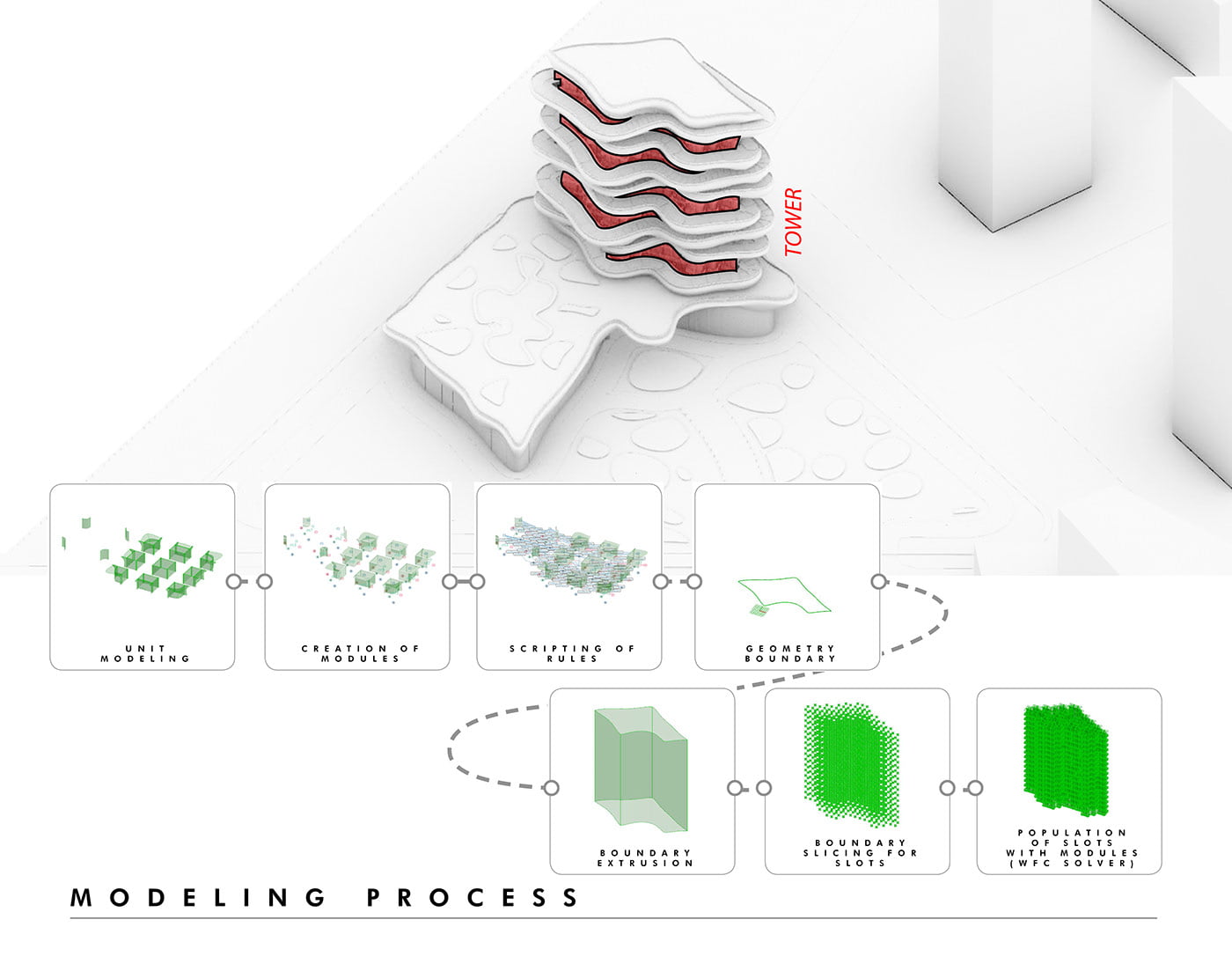
Modelling process for Frondosa Waterfront Hotel and Casino project by Alab Aviento
Algorithmic Design
While parametric design is influenced by the parameters in a model, algorithmic design makes use of algorithms to generate design ideas. These algorithms are rules which describe information, defined in a logical sequence to generate a design. Algorithms are different from parameters; while algorithms are rules, parameters usually represent existing conditions which we can manipulate.
Algorithmic design does not just give dynamic forms - it can give countless iterations of them in minutes.
Generative Design
Generative design usually works concurrently with either parametric or generative designs or both. The word ‘generative’ tells us this is what "actually" produces the designs. This has also caused much confusion regarding the terminologies.
It is more accurate to say that both parametric and algorithmic design methodologies are closely related to generative design. The reason – algorithmic design utilises parameters and algorithms to generate design iterations based on specific constraints.
There is an even more advanced generative design system known as Evolution-based Generative Design. It refers to a process to evolve design by adapting to their environment akin to natural selection.
Read our blog on Computational vs Parametric vs Generative Design to understand the similarities and differences in these terms.
The next set of design techniques we will talk about makes use of algorithmic and generative design, and occasionally parametric, hence, they are also considered a subset under Computational Design.
Performative Design
Performative design or performance-based architecture is a significant and productive design development methodology today. Here, simulation-based building design is the guiding principle behind form generation through performative simulation processes. To do so, we need the help of algorithms. We can analyse, formulate and generate designs that are adaptable to the changing conditions of nature.
Form Finding
Performative design, along with form finding, displayed how the traditional linear design development process can change for the better with Computational Design. Long gone are the days when designs were based on personal preferences and the visualisation of the architect. Instead, this process makes use of the natural elements and algorithms through performance modelling and simulation for optimum form and dynamic adaptability.
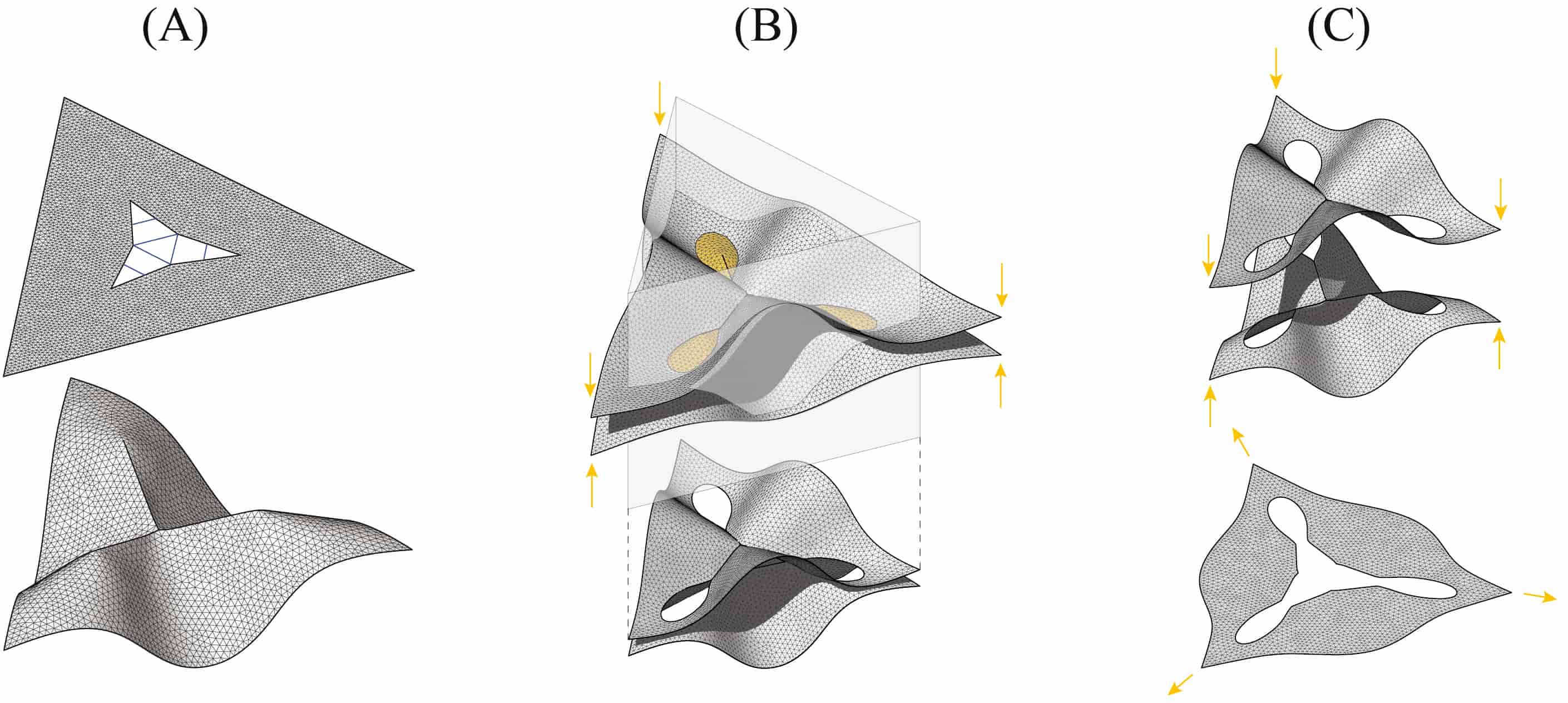
A form-finding process using a triangle to create 5 iterations
Design Methodologies Closely Associated With Computational Design
Biomimetic Design
Biomimetic design takes inspiration from nature and replicates not the form, but the behaviour of biological organisms. Computational Design enables architects to study the different forms and processes found in nature to solve human problems sustainably. Rather than a simple modelling technique or architectural style, it is a scientific approach towards sustainable design by studying design principles found in nature.
Digital Fabrication
Other than buildings, we usually don’t get to see the design output in its physical form. Digital fabrication changes that. It is a computer-controlled manufacturing process that comprises additive, subtractive and robotic automation. The digital data as a CAD file defines the instruction from the software to the fabrication equipment. When used in architecture, it gives us the capacity to design and produce even the most complex forms.
This has allowed architects to experiment with new materials, joinery, and entirely new forms. Prefabrication, or prefab in short, is also becoming increasingly common where parts of a building are constructed off-site.
Topology Optimisation
Topology optimisation is the use of Computational Design as a mathematical approach to optimise the material layout of a specific design space. So instead of creating an entire form, topology optimisation looks into how we can use materials to generate rational and aesthetic morphology.
The result is a layout that meets a prescribed requirement of performance targets. It is a design technique that is more common in engineering designs for industrial products, aerospace and automotive.
Machine Learning And AI
It is safe to say AI has taken over many industries. Even the design industry is taking in AI with either wonder or disdain. The easiest example is AI-generated designs; we key in conditions that work as algorithms to generate the design without doing any actual designing.
Machine learning is also a branch of AI focusing on the use of data and algorithms to study the way humans learn to gradually improve accuracy. Looks like we can no longer escape from computational algorithms!
Material Computation
Material computation is an advanced field of innovation and research even within the AEC industry. It has been popularised by researchers like Neri Oxman who worked on creating new materials and structures for sustainable design and construction.
Material computation explores variations of material properties and compositions to correspond to structural and environmental constraints. It is just not a simple research topic; it is a whole new methodological framework that includes modelling, analysis and fabrication.
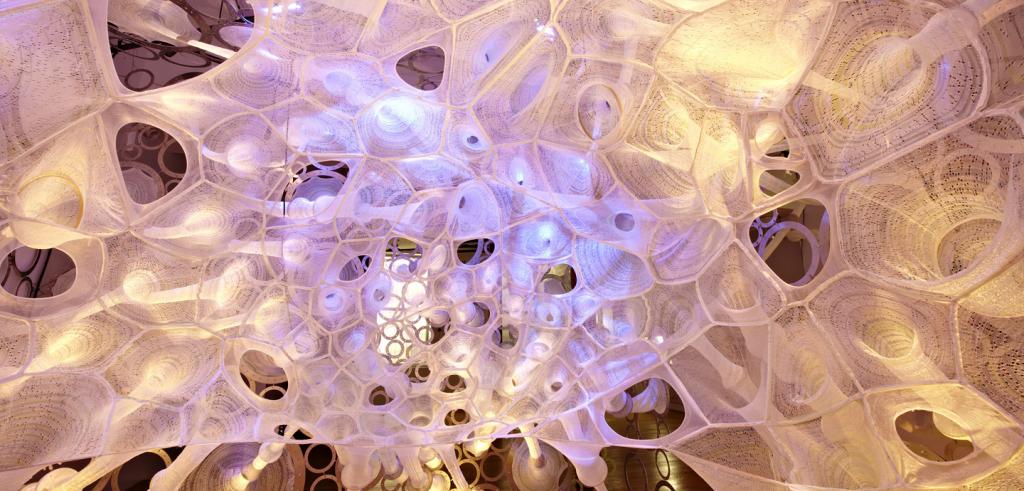
a web-like structural installation by Jenny Sabin
The Application Of Computational Design Across Industries
Computational Design In Architecture
The application of Computational Design is best exemplified in the architecture domain, from free-form whole building design to a small section of building facade. With optimisation and exploration of design complexity, Computational Design tools can now generate an abstract virtual concept into a physical 3D reality.
Just take a look at these impressive parametric buildings or these fascinating parametric facade design projects; they tell us Computational Design, in the form of parametric design, can be applied to buildings and structures of all scales.
Many innovative architects and firms are now applying Computational Design and BIM, called computational BIM, to streamline complex design projects with computation and automation.
Environmental Design
However, the application of Computational Design in architecture does not just culminate there. Architects are increasingly relying on computation for environmental design for sustainability. Energy and building performance analysis tools that are a part of Computational Design software ensure architects can make informed decisions for sustainable design. Moreover, when you know Computational Design, you can even make your very own plugin for better workflows, just like Kritika Kharbanda did.
Engineering
Computational Design tools such as Grasshopper bring the power of computation into a prime 3D modelling software like Revit. Performance studies, structural analysis, and lifecycle assessment are all feasible in such tools. Analysing data is not the only thing engineers need. Just like with architecture, automation through Computational Design is an invaluable asset in engineering.
Construction
The advanced technology of computational design and robotics can fabricate building pieces off-site which can be brought and assembled on-site afterwards. Known as prefabrication, it reduces resource wastage and damage to the site. In addition, we can now 3D print houses, albeit still small in size, right on site.
Automation & Robotics
The use of robotics is best seen in fabrication processes. Computational Design has enabled architects to become fully involved in all design-fabrication processes. Robotic fabrication includes additive and subtractive manufacturing as well as robotic automation where a structure may be held or assembled by robotic arms. This technology has given rise to 3D-printed structures and houses.
Fashion

Queen Ramonda in her royal headdress in Marvel’s Black Panther
Now, this may come as a surprise since fashion is not an AEC discipline. However, it is true that Computational Design can also create fashion. Using such advanced technology means that fashion designers can now better understand how a material works or even get creative with new materials.
Furniture & Product Design
The creative freedom brought about by Computational Design has also delivered some of the most interesting and innovative furniture and products. We can find, metaphorically speaking, the traces of computation in the forms of these designs and their method of production.
Gaming Environment & Metaverse
Metaverse and gaming environments are the most fitting domains to delve into Computational Design. There is no need to worry about constructability, durability, materiality and cost. Metaverse is the next ‘it’ thing in both - design and tech worlds. It has grown outside of video games and now architects out there are also designing in the Metaverse. As more users and tools are amassed, new projects are becoming increasingly open-source and democratised, giving architects an infinite realm for design.
Automobile Design
The process of designing advanced sculptural forms is much needed in the automobile industry. A linear process from sketches to final product will soon disappear, along with the expense that comes with these processes. Automobile designs can be generated by applying parametric and algorithmic constraints to explore and test different design morphologies for both aesthetics and functionality.
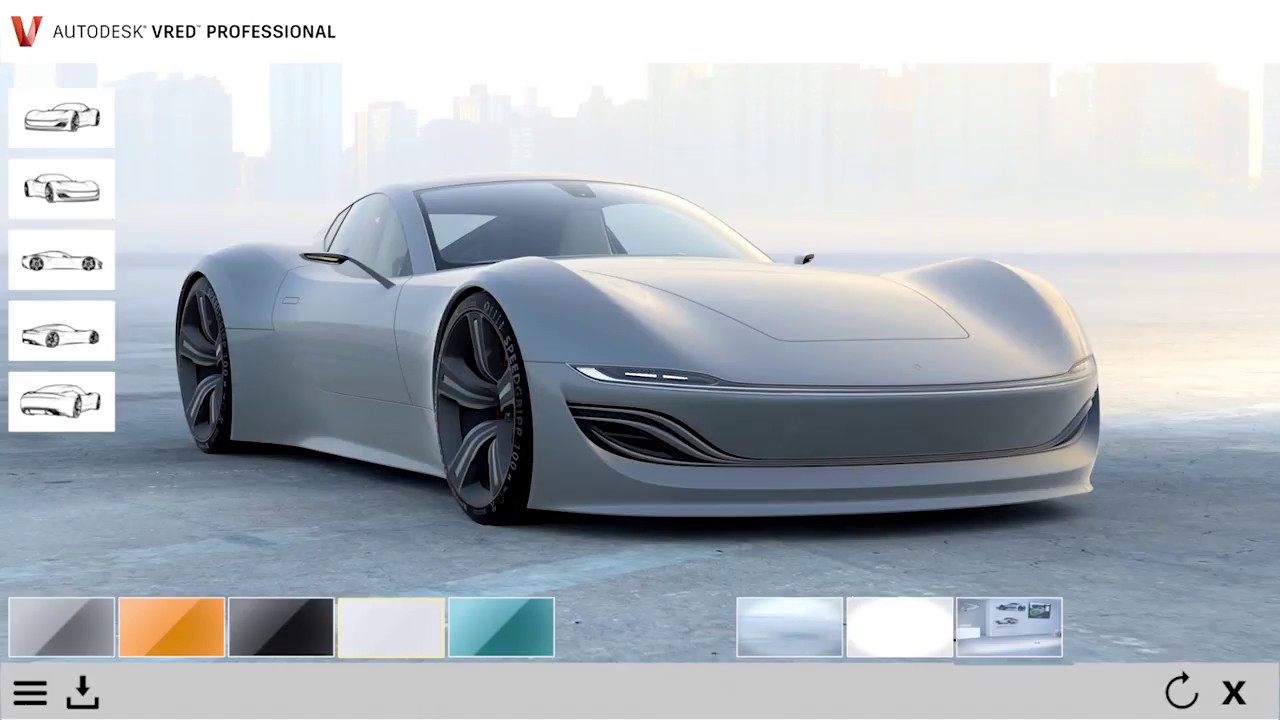
Futuristic automobile design in Autodesk VRED Professional
Examples of Projects Using Computational Design
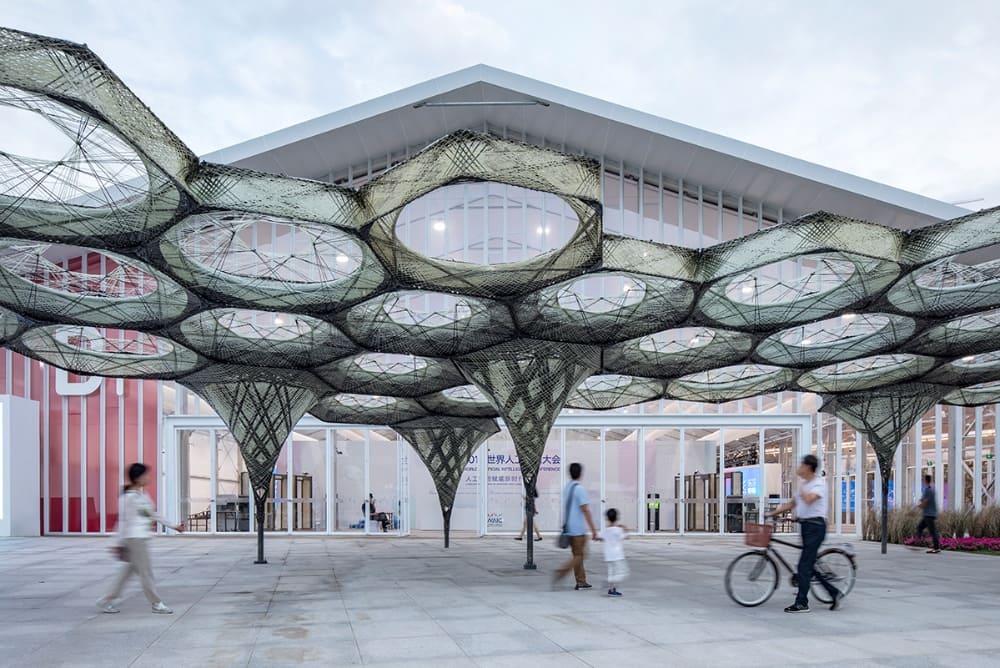
Elytra Filament Pavilion at its site in Shanghai
Elytra Filament Pavilion, located in Shanghai’s prime art district was designed for the World Artificial Intelligence Conference 2018 (WAIC). The unique spatial and aesthetic qualities of the pavilion demonstrate the computational synergy of architectural design, structural and environmental engineering and fabrication technology.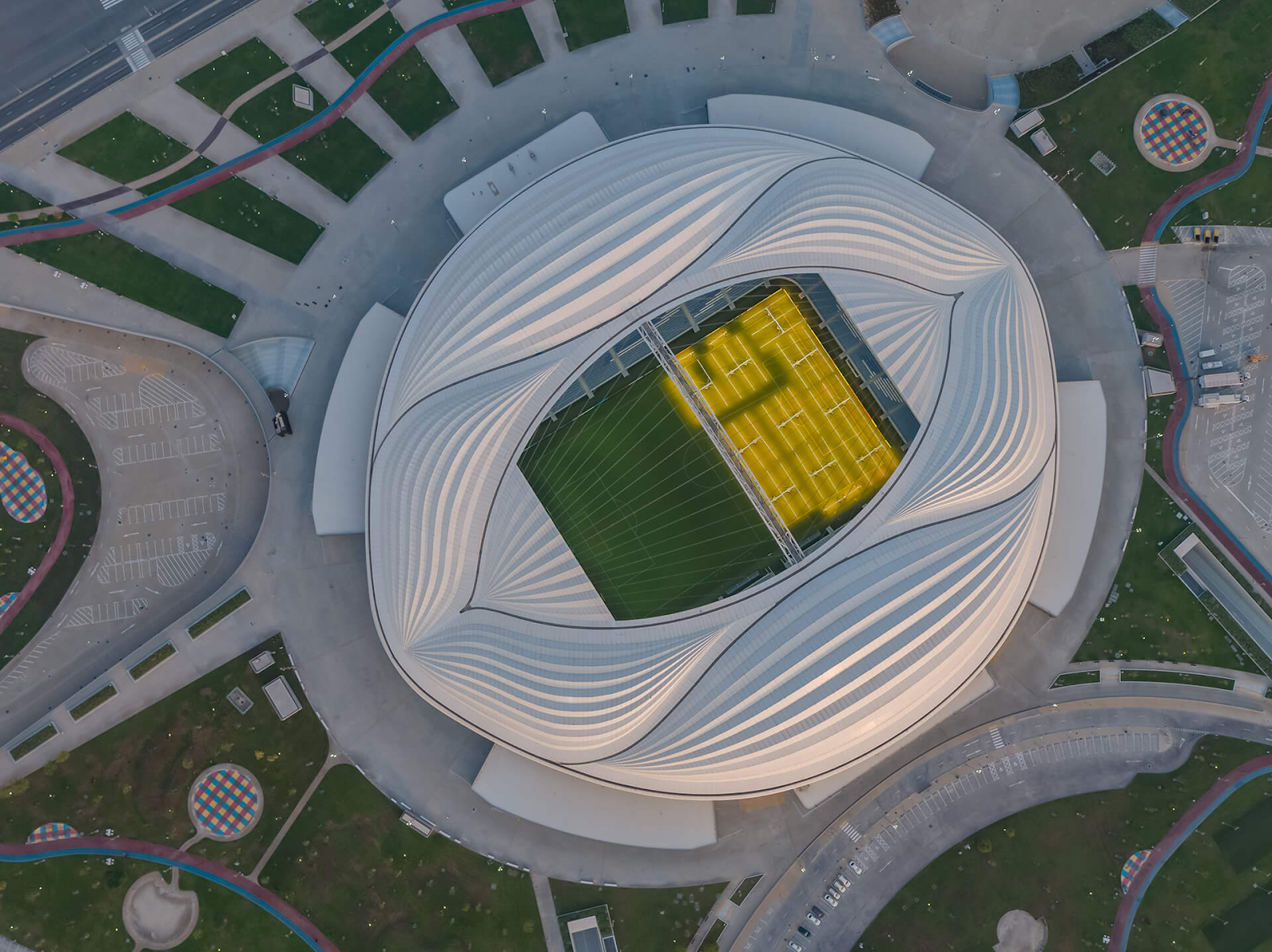
The top view of the Al Janoub Stadium in Qatar by ZHA
Designed by the pioneers of futuristic architecture, Zaha Hadid Architects, Al Janoub Stadium for FIFA World Cup 2022 took inspiration from the hull of a local sailing vessel known as the dhow. It can seat 40,000 people, covered by a retractable fluid roof design.
An architectural rendering of the top view of Shirdi Sai Baba Temple
An algorithmic process meets sacred geometry to create the Shirdi Sai Baba Temple in India. The hendecagon structure covers the interior spaces while evaluating environmental aspects. The project was a collaboration between Rat [LAB] Studio and Shilpa Architects.

Mercedes-Benz Concept IAA
Mercedes-Benz Concept IAA is a collaborative project between the Institute for Computational Design and Construction (ICD) and Mercedes-Benz Design. The highly innovative design was explored to fuse the conflicts between function and aesthetics with active, adaptive aerodynamic features.
Also Read - What is computational design for civil engineers? Explained!
What Are The Benefits Of Computational Design?
Mastering Computational Design means transforming visions into reality, bringing about better designs, and manifesting business opportunities.
Design Better Solutions
Creating design through generative design techniques is easier and faster; hundreds or even thousands of design options can be available within minutes whereas it would have taken probably days with manual design development and drafting. Performing analyses during design ideation, architects will also make informed decisions using parametric and algorithmic means.
Automate Repetitive Tasks
In direct modelling, the simple task of updating dimensions can turn tedious. In Computational Design tools, the algorithms play a huge role in facilitating the process where all elements can be updated instantaneously in real-time.
Mitigate Design Risks
Informed decision-making during the iterative design process enables architects to improve design quality. The power of computation can bring forth higher quality than what’s achievable within human capabilities. The analysis does not just cover building performance; with the help of immersive reality and AI, we can even create multiple scenarios to test a design.
Reduce Project Costs
All these above ultimately can reduce project costs, and yet still produce a high-quality building design. Automating repetitive tasks saves time so that there are fewer professionals involved or more projects can be taken up within the same time frame. Mitigating design risks for better design solutions reduces the chance of reworks and potential design hazards during construction.
Demand And Future Scope For Computational Design
Many within the AEC industry already consider Computational Design to be the future of architecture and construction. Currently, Computational Design skill is considered a competitive advantage; but soon in the future, they will become a prerequisite for any professionals working in the architecture and design industry.
The interiors of Morpheus Hotel by ZHA with its dark exoskeleton structures
The Creative Freedom
If there is anything that can attract architects to use Computational Design, it is the creative freedom that it grants to the users. It is also the reason why there is a boom in dynamic building designs that are more organic and free-form; so much so that it has created a misconception Computational Design, or any of its subsets, means curvy buildings.
However, such buildings, furniture and industrial products are proof that architects and designers are now freely expressing their creativity enhanced by the power of computation.
A Demand Within A Demand
One aspect of design that we can also see growing is the rise of design tools and indirectly technical skills. As more architectural firms are showing interest in advanced technologies, professionals skilled in said technologies are becoming sought-after. We have also observed a similar trend with BIM in the AEC industry.
In the same line, we have also seen more tools being developed in the industry. Architects and designers have realised that design as a process requires data through multiple software. Many AEC firms are now developing in-house applications and tools for their project teams. And of course, at the centre of it all is Computational Design.
Popular Computational Software In The AEC Industry
How Do These Tools Work?
Computational Design differentiates itself from the CAD process in two obvious ways - the presence and use of algorithms and parameters through visual programming. Most Computational Design tools incorporate visual programming as the basic workflow, while text-based programming can be added knowledge. This is an advantage to architects; the assembly of sequences or programs are easier graphically compared to writing codes.

A visual programming script network with nodes in Grasshopper
The inputs are connected in nodes that flow from one another along a network till the end output. The changes from editing the nodes will automatically be reflected in the 3D model.
List Of Computational Software Applications
Grasshopper
Unarguably the most popular computational software applications, Grasshopper is a trusted partner for Rhino 3D. It is a graphical algorithm editor with an extensive library of nodes to facilitate design exploration. It comes integrated with Rhino 3D and requires no additional installation.
Dynamo
If Grasshopper is for Rhino 3D, then Dynamo is for Revit. It works as a plugin using the Revit API for parametric workflows. In addition, it is in use by architects and engineers for performance analysis and automation integrated with BIM.
Enscape
Enscape stands out as a real-time rendering tool tailored for AEC professionals. It provides faster visual feedback on architectural designs. Its smooth integration with leading design software enables swift and straightforward visualisation of projects, complete with lifelike lighting, materials, and effects. With its intuitive interface and real-time rendering prowess, Enscape accelerates the design iteration process. Additionally, its compatibility with virtual reality technology offers immersive insights into spatial relationships and design excellence.
Autodesk Revit
Renowned for its robust BIM functionalities, Revit empowers architects to seamlessly collaborate, analyse performance metrics, and generate comprehensive documentation throughout the entire design and construction process.
There are many other tools that support various Computational Design processes, from modelling to climate analysis to automation. This tells us one thing – Computational Design can do it all.
Careers In Computational Design
Computational Designer
A computational designer focuses on providing Computational Design input in all stages of the design. The role and scope of a computational designer is so vast that he/she can work in any design discipline.
A computational designer can work in architecture aiding the design team with intricate modelling and ideation. They can also work in other design disciplines; even brands such as Adidas have Computational Designers working for them.
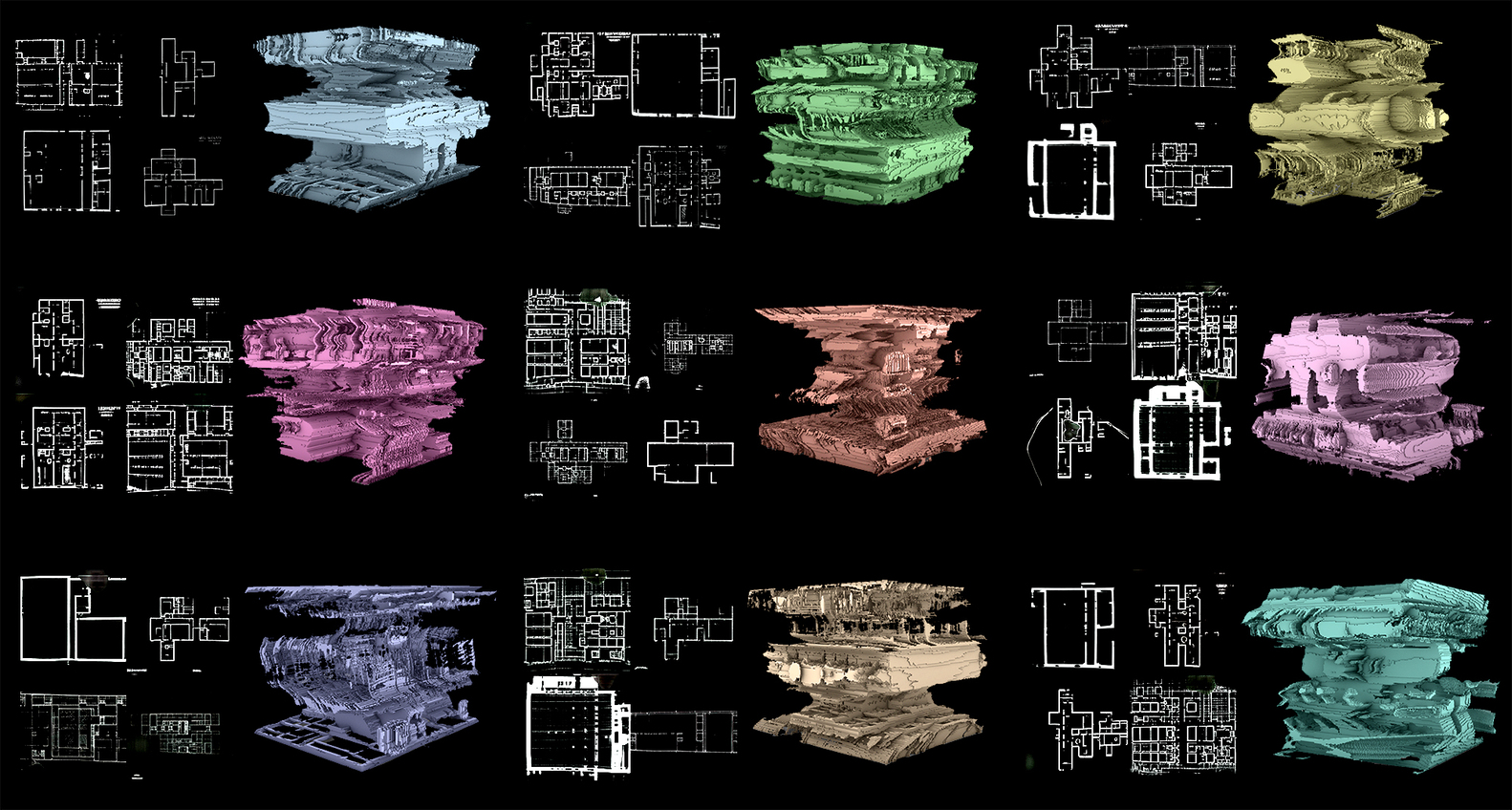
9 different design iterations were produced with AI for a project by Karent Al Asmar
Sustainability Expert
Sustainability expert is a rather broad term as a profession, but it is meant to cover all the experts specialising in sustainable design in the industry. For example, Afshan Rehman, one of the mentors for BIM Professional Course, is a sustainability project manager who has vast experience in sustainable operations, building performance simulations, environmental science and generative modelling.
Design Technology Specialist
This role is similar to a Computational Designer, but is more specialised with their knowledge of computational technology, including BIM (Building Information Modelling). The main responsibilities revolve around supporting and improving workflow collaboration by conducting complex modelling, analysis, design optimisation and data management for architectural and engineering design projects.
These are the three typical roles in the field of Computational Design, but needless to add, there are more. However, as our mentor for Computational Design course, Brice Pannetier, states, one does not need to be employed in these roles to use Computational Design. Even an architect or an engineer can use it in their design and analysis workflows.
How Can You Learn Computational Design?
Standalone Long And Short Format Courses In Computational Design
While these master’s programmes are popular, they can be long and expensive. Hence, many aspiring computational designers turn to shorter courses. Unfortunately, there are not many short courses in computational design, unlike BIM, as the interest in it is still slow in many parts of the world.
Novatr
The lack of well-structured courses with curriculum created by industry experts means that not everyone interested in computational design can learn and pursue a career in it. Novatr understands the trends of the industry and the woes of the industry professionals, and in response, has come up with the new Master Computational Design course for real-world application.
- As the name suggests, it not only teaches the theory of computational design, but also equips the learners with industry-relevant skills in both software and design.
- The course is entirely curated and delivered by experts in computational design working in top prestigious architecture and design firms.
- The learners will get to learn over 20 software and tools and master computational design workflows for real-world industry projects.
- Furthermore, the course offers two specialisations – Computational BIM and High Performance Building Analysis. The learners are able to choose between the two based on their career aspirations.
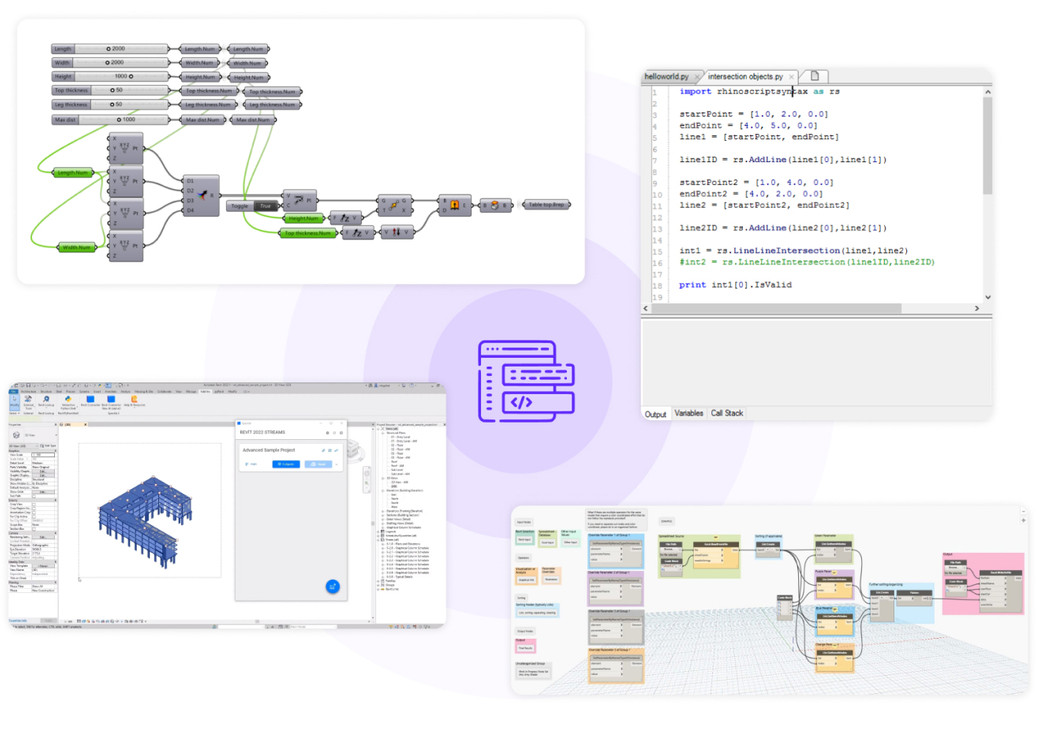
Visual programming, sustainability, and scripting as part of the curriculum
Computational Design is a tough nut to crack, but one with good returns. Here is an easy way to crack it and unlock your creativity. Master Computational Design for real-world application with Novatr and enjoy the new creative freedom and better career opportunities. You will be learning from industry experts who have years of experience working with Computational Design in prestigious firms like UNStudio, Zaha Hadid and Buro Happold. Get started today!
DesignMorphine
DesignMorphine is an international educational institution that offers a Master’s in computational design. The curriculum is organised inτο Design Chapters and five supporting Technical and Theoretical Labs over a period of 9 months. Architects and designers themselves deliver the course, exploring advanced architectural techniques and entities with a variety of software for parametric and generative design.
DesignMorphine’s course probably has been the only structured course in the industry for the past few years. There are shorter courses, however, they only explore a small facet of computational design using Rhino 3D and Grasshopper. Here are Top 7 Rhino and Grasshopper Online Courses if you are interested in Parametric Modelling.
Master’s Degrees In Computational Design
For such a complex methodology, it is best to learn computational design through a course. There are a few prestigious universities (most of which are in Europe or North America unfortunately) offering master’s degree programs around different facets of computational design. Here are some well-known master’s degree programs in computational design.
Carnegie Mellon University offers two programmes, both 2 years long, related to computational design. M.Sc in Computational Design takes a computer science view of design and its application for both science and art, real and imagined. Meanwhile, the Master of Advanced Architectural Design is a studio-based programme that explores research by design in fabrication and architectural design.
IAAC is also well-known for its master’s programmes in computation. Master in Advanced Computation for Architecture & Design is an online programme that equips students (course duration is approximately a year) with the latest digital skills for design simulation, analysis and optimisation of digital data in architecture.

 Thanks for connecting!
Thanks for connecting!


/827x550/images/blog/blogHero/generative_design_architecture.jpg)
/fit-in/390x220/images/blog/blogHero/Rain_Watcher_Catcher_NUDES_Office.jpg)

.png)


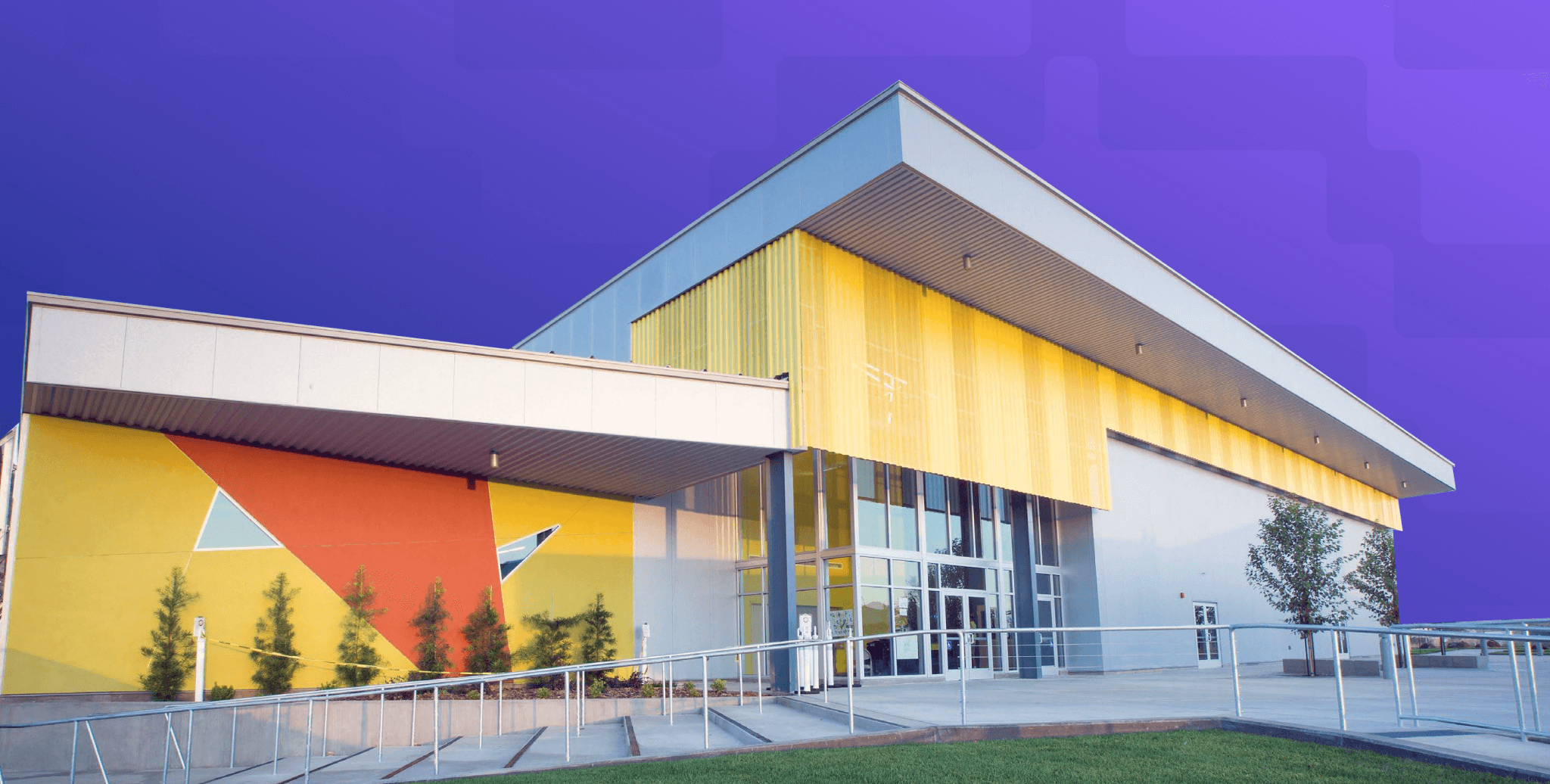
-1.png)

